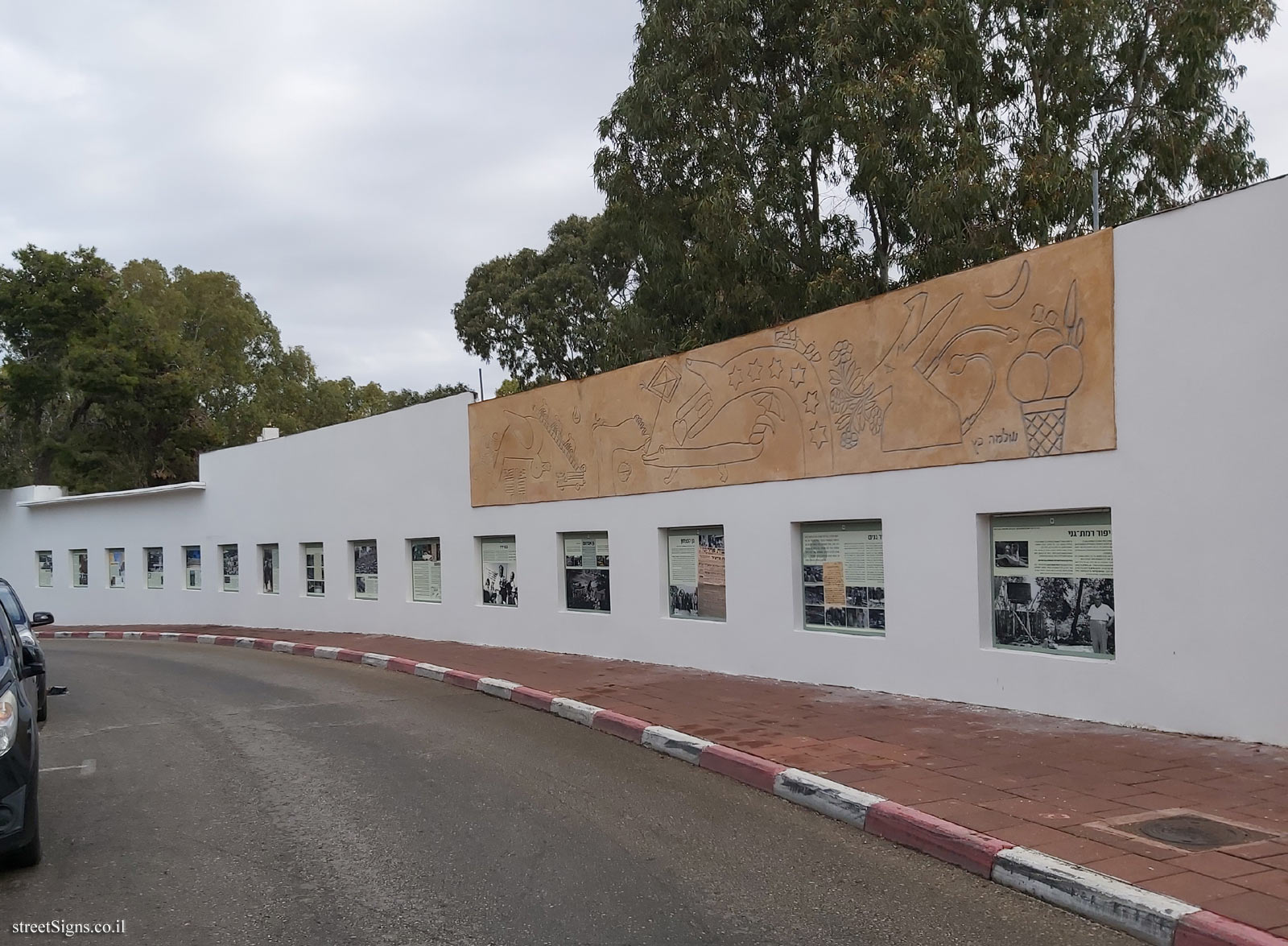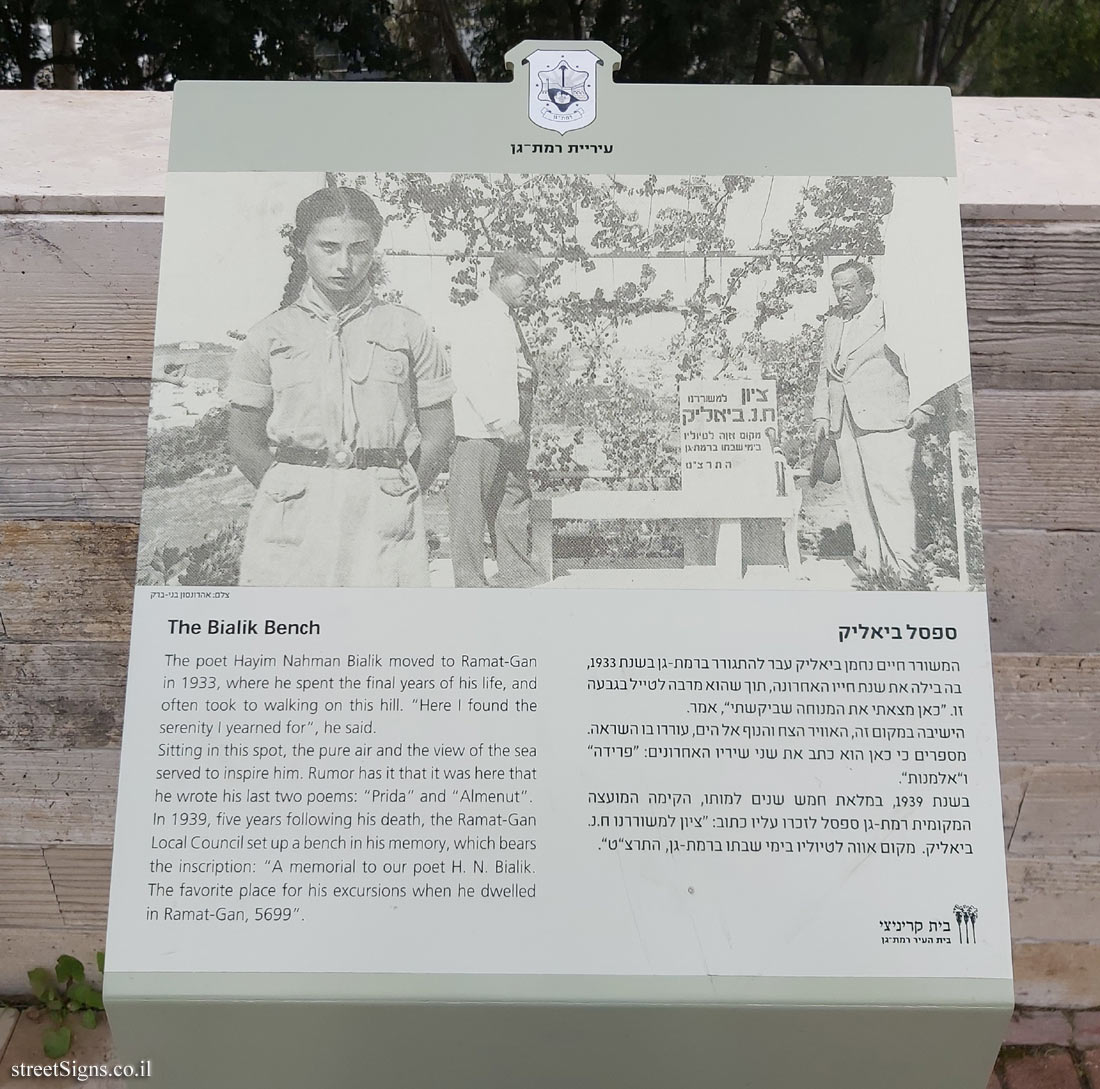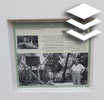Picture from the open exhibition at the Abraham Garden, an exhibition commemorating the history of the city of Ramat Gan.
The exhibition is located on the wall of the amphitheater, in the Abraham Garden.
In the next photo taken that day, the exhibit is displayed and topped by Shlomo Katz’s Sgraffito
 Click for a larger image
Click for a larger image The Bialik bench appears on the website, where you can find its pictures
 Click for sign's details Translation of the text on the sign
Click for sign's details Translation of the text on the sign:
Ramat Gan city symbol
The bench "This is where I found what my heart desires," said the national poet Haim Nachman Bialik when he arrived at Gan Avraham, and not in vain. Here Bialik found a quiet and magical corner in the shade of carobs and oaks, but most of all he was captivated by the magical views from the hill, the spaces and the sea in its endless blue and shades.
The pastoralism in the Garden of Abraham took him back to his youth, to memories of Odessa in the Ukraine, where he wrote, among other things, his poems, which had a touch of flora and fauna; "Between the Green Trees", "To the Bird", "The Bird’s Nest", "I Have a Garden ..." ", which eventually became inalienable assets in Hebrew music. Written under a gloomy cloud and bursting with emotion.The works were combined into a file - "Orphan Songs Cycle": "Avi (My father)", "Shiva", "Widows" and "Farewell".
Haim Nachman Bialik is considered the greatest poet in modern times. His influence on Hebrew culture and language was like a beacon in the Sea of Culture in the Land of Israel.
He was born in Zhytomyr (Ukraine) in 1873. Poet, writer and translator. Immigrated to Israel with his wife Mania in 1924 and settled in Tel Aviv.
Over the years, the Bialik House has become a museum, archive and literary center, documenting his writings and cultural legacy.
Over the years, the Bialik House has become a museum, archive and literary center, documenting his writings and cultural legacy.
Since the house in Tel Aviv was crowded with visitors and guests, Bialik rented the apartment at Beit Rosenblum at the entrance to Sderot Hiled, with the help of Avraham Krinitzi, where he could retire and write quietly and from there he would make his way up the garden, where he found what he wanted.
In 1934, Bialik underwent surgery in Vienna, from which he never returned. He was buried in the Trumpeldor Cemetery in Tel Aviv.
Farewell
Lyrics: H.N. Bialik
And in the morning of spring all night long, in the standing position of the whole world
In its purity and initial purity, and before the suburb awakens
For the crowd in it and the noise that pollutes it (it seems that on such a morning
Abraham, our father, rose up, and led his son to Aqeedah).
My mother stood up, prayed, and bundled up the worn clothes,
They are all the set I wore, which she repaired the night before:
[Pictures]
Above and on the right: a bench in memory of Chaim Nachman Bialik, July 7, 1939, Photo Singer
Left: Portrait of Haim Nachman Bialik, unknown photographer
Krinitzi House
Ramat Gan City House

 Click for a larger image
Click for a larger image  Click for sign's details
Click for sign's details  Click for all signs belonging to The open exhibition at Ramat Gan
Click for all signs belonging to The open exhibition at Ramat Gan
 4 Meter |
4 Meter |  4 Meter |
4 Meter |  6 Meter |
6 Meter |  9 Meter |
9 Meter |  10 Meter
10 Meter